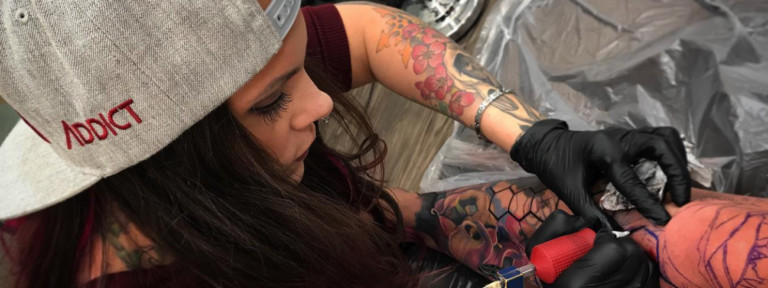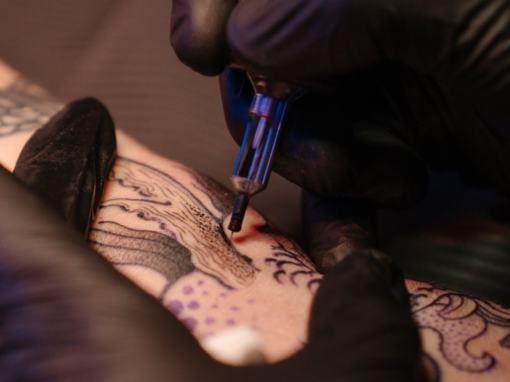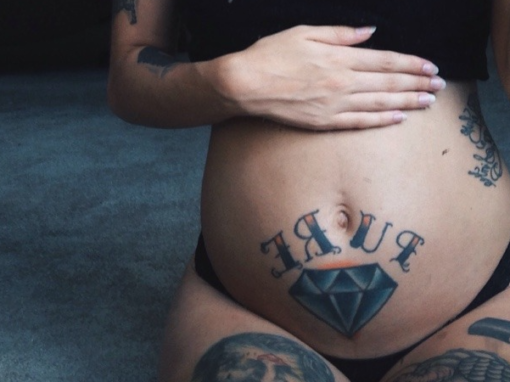Tattooing is not just a creative art form, but also a service industry where the main goal is to meet customers’ needs and expectations. As a professional, you have to understand both the client’s vision and the technical aspects of how a tattoo will interact with their skin type.
To explore the relationship between skin types and tattoo compatibility in greater detail, we’ve invited Quinten Harper, an experienced tattoo artist from Detroit, to share his insights and expertise.
Meet Quinten Harper

Born and raised in Detroit, Quentin brings over 16 years of experience in the tattoo industry, backed by a lifetime of artistic practice. Alongside Krissy “The Butcher”, he co-owns Bloodline Dynasty, a tattoo studio that celebrates Black excellence and honors African dynasties.
Before launching their own business, Quentin and Krissy spent years working side by side in tattoo booths, building a loyal clientele and making a name for themselves in the industry. The shop’s logo, designed by Quentin himself, is inspired by the Egyptian god Horus, symbolizing vision, power, and protection.
Quentin has made a name for himself specializing in Black and Gray Realism, with a particular love for large-scale tattoos. “The bigger, the better,” he often says. While black and gray work is his main focus, he also enjoys mixing things up with bold color pieces from time to time to keep things fresh and exciting.
Understanding Skin Types in Tattooing
A common misconception is that you can apply the same level of detail to every skin type.
— Quinten Harper to InkMatch
It’s really important to understand skin types, especially when you’re just starting out as a tattoo artist. No matter how much you practice with fake skin, working with real clients is a completely different experience.
The good news is that all artists have been there, and over time, you’ll gain a deeper understanding of your customers. Take Quinten, for example, with over 16 years of experience in this field: “I don’t really see tattoos as challenging anymore, at least not in the way you might think. I approach each tattoo with the same focus and care, regardless of the skin type.”
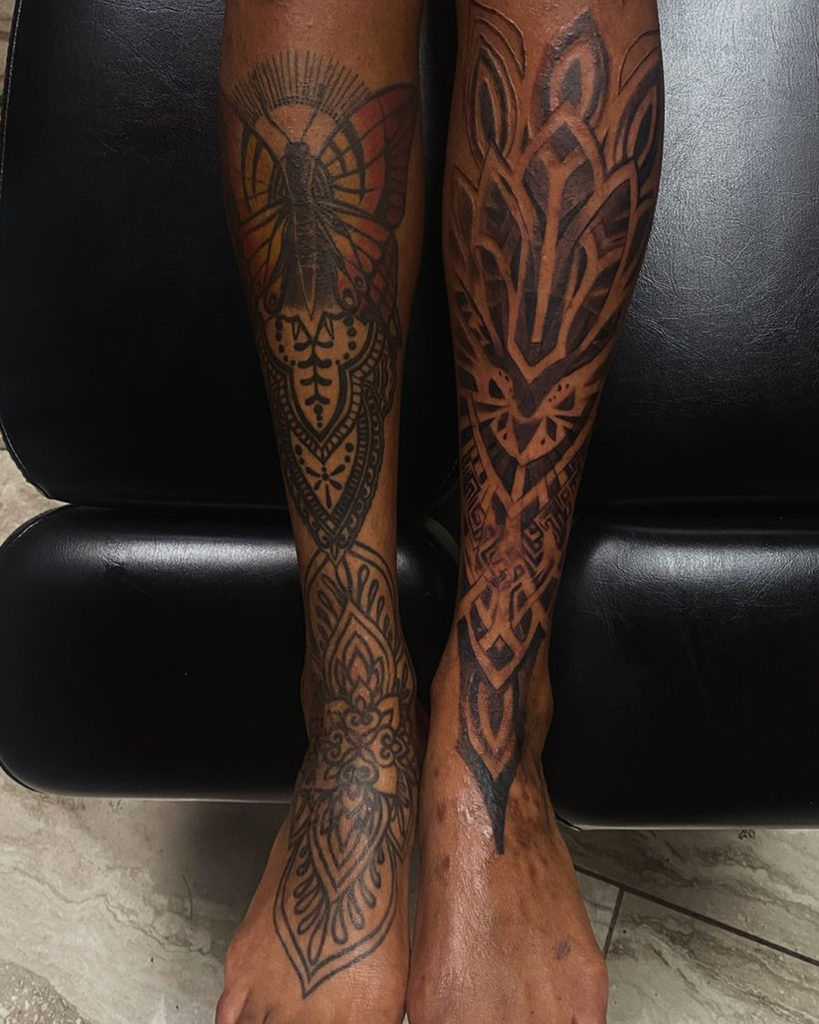
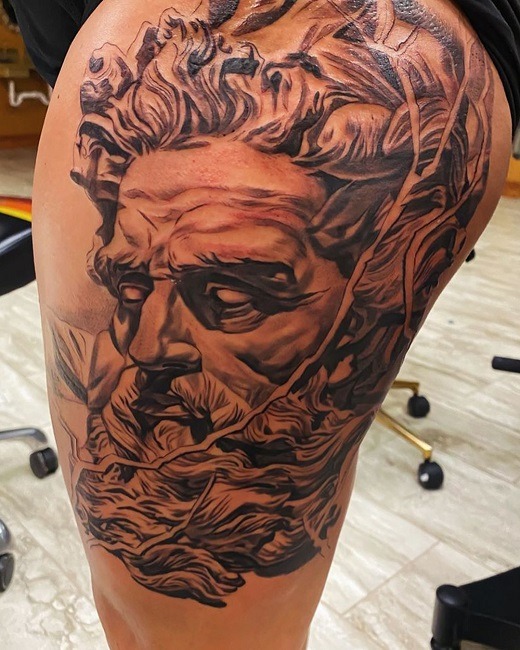

Works by Quinten Harper. Source: Instagram
Skin type plays a big role in tattooing. Complexion plays a part — how light or dark someone’s skin is can affect how much detail you can put into the tattoo. But skin types vary in how they take ink, and that can differ from person to person, no matter their complexion.
The same design will look different on different bodies, even if it is applied to the same area. As Quinten puts it: “Sometimes, you won’t know exactly how the skin will react until you actually start tattooing.” Below, we briefly list all major factors to pay attention to first when asserting your client’s skin type.
| Skin Tones | Skin Texture | Skin Elasticity |
| Smooth | ||
| Light | Textured | Elastic |
| Olive | Oiled | Lose |
| Dark | Dry |
Features of Dark Skin Tattoos
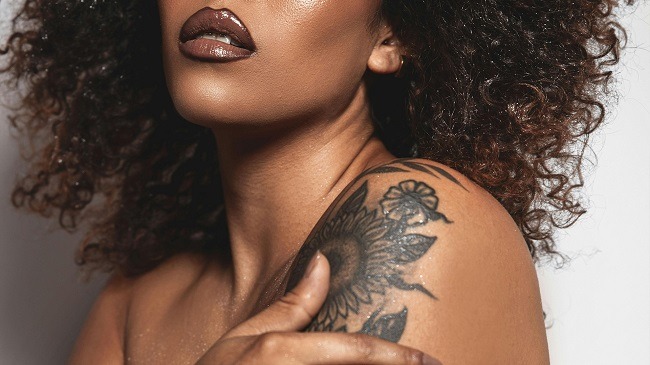
Skin tone comes in a whole range of shades, but it’s usually grouped into three main categories: light, medium, and dark. If you search for tattoo examples online, you’ll probably see more images of people with light skin, while darker tones don’t get as much attention.
For this reason, darker colors may seem to be harder to work with because of the fear that a tattoo can blend in with the skin tone, or the colors won’t be as saturated. Here’s what Quinten shares on this matter:
For a darker-skinned person, you will need more contrast to make the details pop. We often use more black in the design to achieve that. Thicker linework also helps the tattoo stand out in darker tones. Personally, I use a lot of black in my work regardless of skin tone, but for medium or brown skin, it’s usually best to incorporate even more black for clarity.
— Quinten Harper to InkMatch
Tattoo ink sits beneath the melanin in the skin, meaning if the skin tone is darker than the ink pigment, that color simply won’t show up as intended. All skin tones deserve a quality tattoo, and the best way to understand how to work with different skin tones is to study color theory. “Experience is the best teacher,” highlights Quinten.
However, contrast doesn’t work as usual with skin, so white ink is not recommended for darker tones. If lighter colors worked well on darker skin, you’d see them more frequently — but unfortunately, that’s not the case.
How Skin Elasticity and Texture Affects Tattoos
Few people think about the role of the customer in tattooing. Of course, the tattoo artist has to master working with all possible skin types, but the client’s skincare also matters. By care, we mean diet, hydration, and sun exposure levels.
For people with very dry, scaly, or sun-damaged skin, I don’t recommend using fine lines or intricate details — they just won’t last well.
— Quinten Harper to InkMatch
Quinten points out that sun exposure is one of the biggest threats to the longevity of tattoos: “A lot depends on how well the person takes care of their body overall. Hydration, diet, and even how much sleep they’ve had can affect how the tattoo turns out. Those who take good care of their skin, like avoiding too much sun exposure or harsh environments, tend to have tattoos that hold up better.”
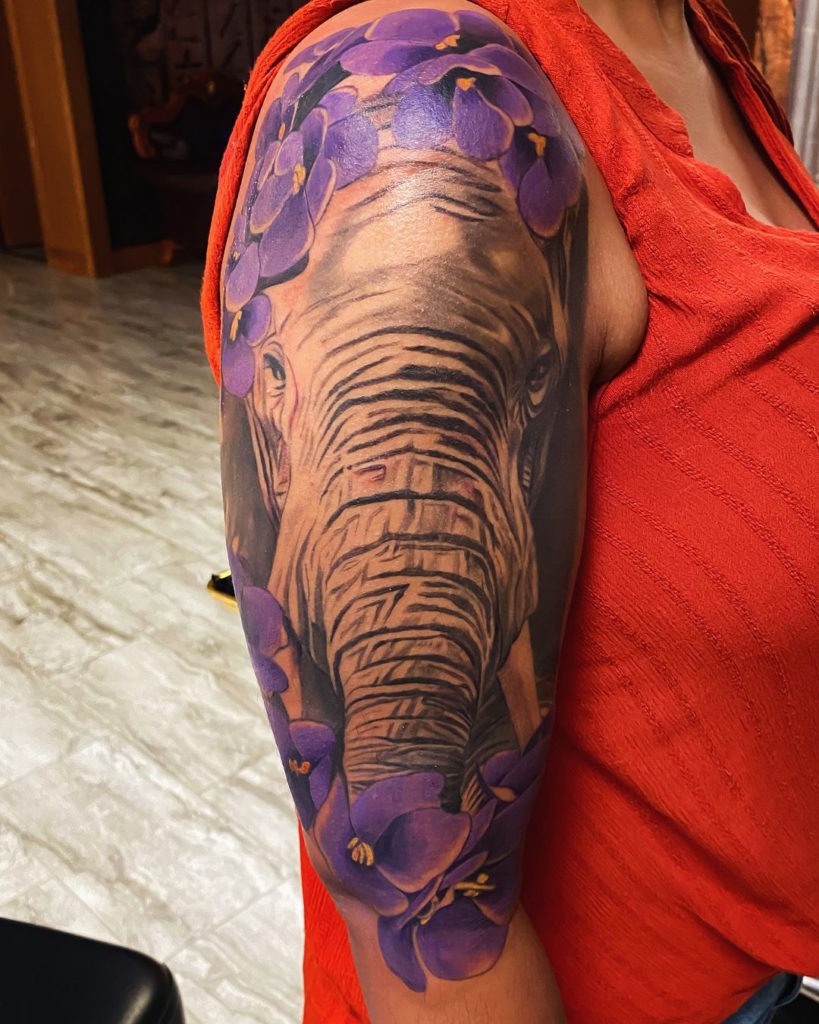
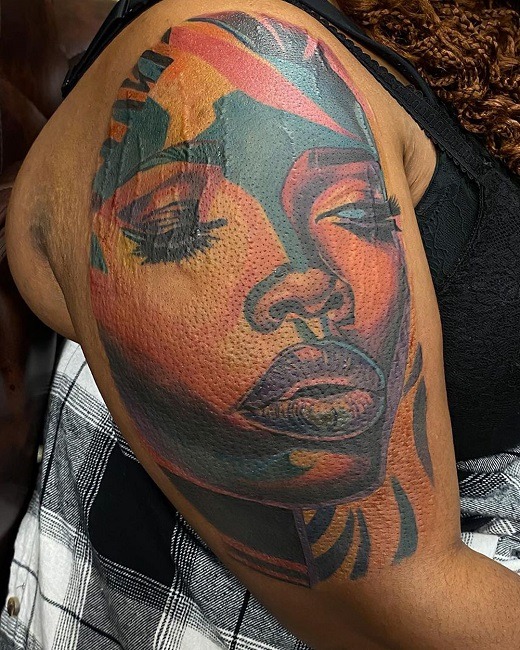
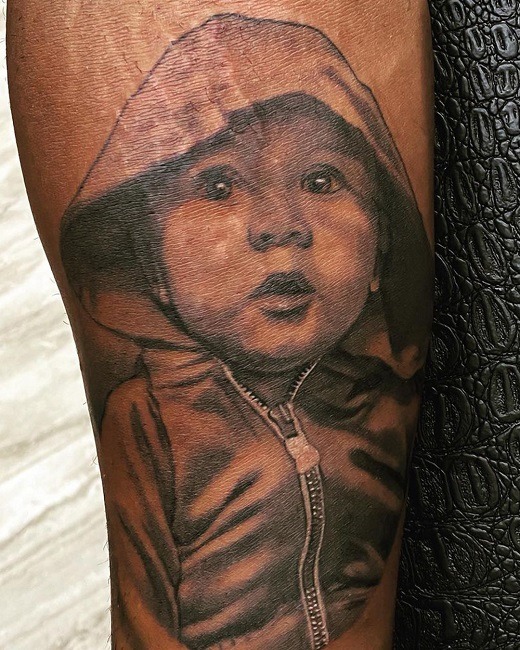
Quinten Harper’s works with color and various skin types. Source: Instagram
Of course, there are factors over which we have little or no control. Certain areas of the body are more elastic than the other, so it can be more challenging to get the ink in. The skin may lose elasticity due to aging, weight loss, or other factors. In those cases, the skin has to be stretched.
For example, Quinten highlights that working on areas like the lower belly can be tricky, especially for people who gave birth — the skin there is loose, making it tougher to work with. “It just means you need to go a bit slower and be more mindful about stretching the skin properly,” says Quinten.
Can You Tattoo a Skin With a Condition?

Skin diseases and damaged skin are another important, albeit difficult, topic for some. Tattooing on skin that has been scarred, sun-damaged, or affected by conditions like eczema or psoriasis presents challenges for both the artist and the client. These skin types require special care and attention so that the tattoo does not damage the skin or flare up conditions and possible allergic reactions.
Quinten shares his experience working with damaged skin:
I don’t work on damaged skin too often, but when I do, I usually adjust the design. If the skin feels a bit damaged, I’ll make the tattoo bolder and less detailed to ensure it holds up over time. And when it comes to scarred skin or conditions like eczema, sometimes you can’t work on those areas at all. It really depends on the severity.
— Quinten Harper to InkMatch
In general, skin imperfections can be turned into an advantage if you are careful. For example, it’s not recommended to get a tattoo over moles, but you can make a unique constellation tattoo without affecting them. The same goes for stretch marks and scars if they’re fully healed. It’s always a good idea to run these kinds of decisions by your client. And if you see any signs of risk, be ready to stop working and call for medical help.
According to Quinten, tattoo aftercare is the same for all skin types: clean the tattoo well and keep it moisturized several times a day. However, he noted an interesting detail about the basis of the tattoo care product: “One thing we always advise is to avoid petroleum-based products — we’re not fans of them. We recommend all-natural products instead,” says Quinten. “Anything that comes from the earth is better for your tattoo than processed, petroleum-based options, in our opinion.”
Final Thoughts
Tattooing is about more than just the tattoo itself. It’s also about working with clients and finding the best solution to meet their expectations. You have the power to make the best possible experience for yourself and your clients. With experience, you’ll gain more insight into the perspectives and conditions of each new client. And if you notice that you need to change your approach, schedule, or tool in the process, do so.
Of course, people are different, so you need to be prepared for that as well. Our guest, Quinten Harper, gave us the lowdown on his experience. “Many of our clients may bring in designs they found online and expect them to translate perfectly to their skin. In reality, the design often needs to be adjusted to suit their skin tone. We customize each tattoo based on the individual’s skin type and tone to ensure the best result.”
✨ All skin types deserve a quality tattoo! ✨
FAQ
🙅 What Type of Skin Should Not Be Tattooed?
Tattooing over damaged, irritated, or compromised skin increases the risk of infection and may result in poor healing and distorted designs. This includes areas with sunburn, rashes, open wounds, or active skin conditions like eczema or psoriasis.
💪 What Skin Is Hardest to Tattoo?
Some parts of the body are trickier to tattoo because the skin texture on them is slightly different, like on elbows, knees, or fingers. The approach also differs by the skin’s condition, from age and care to its tone.
🤔 How to Tattoo Different Skin Types?
Skin comes in all shapes and colors! For thicker skin, the artist may need to apply more pressure to ensure the ink settles properly, while delicate or aged skin requires a lighter touch to avoid tearing. Darker skin tones may require deeper needle penetration and multiple passes to achieve the desired color.
⭐ What Skin Do Tattoos Look Best On?
Tattoos tend to look the sharpest on healthy, hydrated skin that’s free of blemishes or scars. It also depends on your client how well the tattoo will last.


